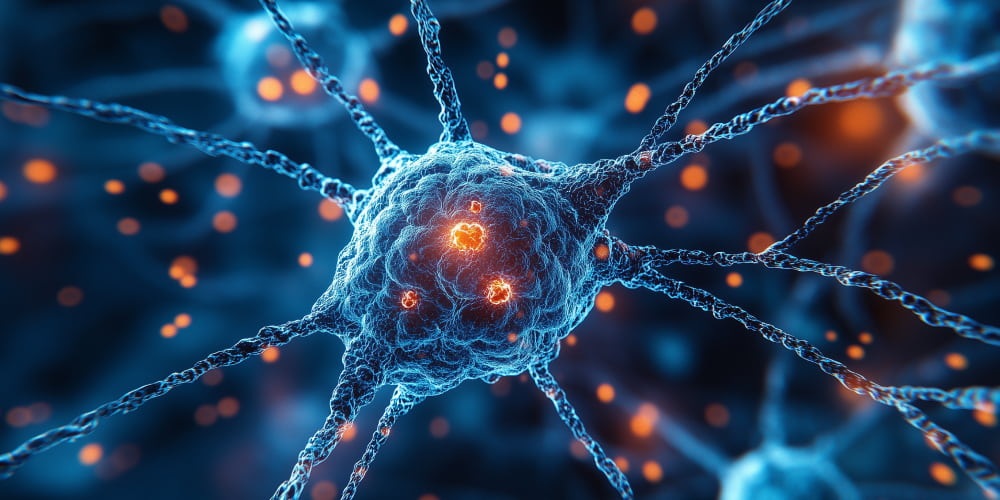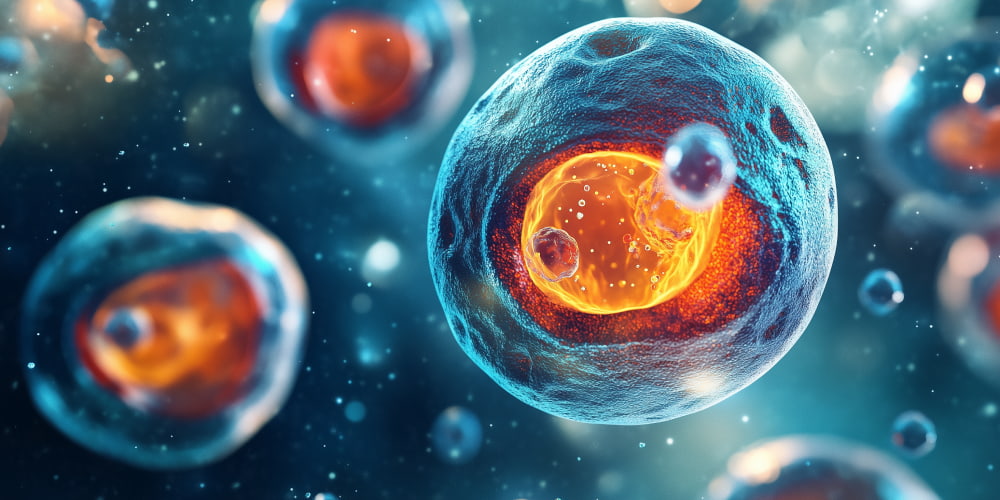Imagine our brains and nerves like a complex network. When something goes wrong, like after an injury or with certain illnesses, this network can get damaged. That’s where stem cells come in. They’re like blank slate cells that can turn into different kinds of cells, including the ones we need for our nervous system.
Scientists have been looking at stem cells for a long time, trying to find ways to fix these problems. Over the years, they’ve learned much more about how to use them. Today, there’s real hope that stem cell therapy could change how we treat things like stroke, Parkinson’s, and spinal cord injuries. This research is vital because it could improve many people’s lives and lead to major breakthroughs in treating brain and nerve problems.
Understanding Neurological Disorders and the Need for Innovative Solutions
Let’s talk about our brains and nerves. Sometimes, things go wrong, and we get what we call neurological disorders. Examples include Parkinson’s disease, which affects movement, and Alzheimer’s, which impairs memory. And then there are spinal cord injuries, which can stop people from moving parts of their bodies. These problems can change how people live, making everyday things very hard.
Currently, we have several approaches to help people with these disorders, such as medication and therapy. But often, these treatments can only do so much. They might help with some of the symptoms, but they can’t really fix the damage that’s been done. That’s why scientists are looking for new and better ways to help. Patients need treatments that can truly heal them, not just temporarily relieve their symptoms. This is where stem cell therapy comes in, and why it’s such a big deal.
The Science Behind Stem Cell Therapy
So, how does stem cell therapy work? Stem cells are unique cells that have the ability to develop into many different types of cells. Think of them as versatile building blocks that can transform into whatever your body needs. In our brains and nerves, when things get damaged, cells die. Stem cells can be used to replace those damaged cells. Scientists can guide these stem cells to become the exact type of nerve cells that are needed. This process is called cell differentiation. It’s like telling the building blocks what to become. They can become new neurons that help us think, move, and feel. Or they can help protect the cells that are still there, keeping them healthy.
Regenerative Medicine and Its Role in Neurological Healing
This idea of fixing or replacing damaged parts of the body is called regenerative medicine. It’s a big field of science, and stem cell therapy is a part of it. Think of it like this: instead of just patching up a hole, regenerative medicine tries to rebuild the whole wall. With neurological disorders, this means trying to fix the actual damage in the brain or nervous system, not just treating the symptoms. So, instead of just giving medicine to help with shaking from Parkinson’s, stem cell therapy might try to replace the brain cells that are causing the shaking.
This represents a significant advancement because it means we might be able to truly heal patients, rather than simply managing their symptoms. It’s comparable to the difference between patching a flat tire and rebuilding the entire engine. Stem cell therapy offers hope that we can truly help people with neurological disorders live better lives. It’s not just about making things easier, it’s about making them whole again.
Neuroprotection: How Stem Cells Can Prevent Further Damage
Now, let’s examine how stem cells can function as protective agents for our neural systems. It’s not just about fixing what’s broken; it’s also about stopping things from getting worse. This idea is neuroprotection.
Keeping Cells Alive:
- Stem cells can release specialized compounds that help maintain the health of our existing nerve cells. This is similar to providing essential nutrients and a protective shield for these cells.
- This is especially critical in diseases like Alzheimer’s and Parkinson’s, where cells gradually deteriorate over time.
Fighting Bad Stuff:
- Sometimes, our bodies produce harmful substances that damage our nerve cells. Stem cell therapy can help eliminate these toxins, effectively clearing out cellular debris.
- This process can help prevent further cellular damage from occurring.
Helping Cells Talk:
- Our nerve cells need to communicate effectively with each other to function properly. Stem cells can help strengthen these neural connections, enhancing signal transmission.
- This can help with things like memory and movement, which are often affected by neurological disorders.
Making a Shield:
- With therapy, stem cells can also make a kind of shield around healthy nerve cells, protecting them from damage.
- This shield can protect from inflammation, or other harmful things that come from diseases.
Research Hope:
- Scientists are doing lots of research to see how well this works. They’re trying to figure out the best way to use stem cells to protect our brains.
- Early results are promising. It shows that stem cells can slow down the progress of diseases like Alzheimer’s and Parkinson’s in animals.
Future Possibilities:
- The hope is that one day, doctors can use stem cells to help people before they get too sick.
- This could mean slowing down or even stopping these diseases from getting worse.
- This also could mean that people who are at risk of neurological disorders might be able to get preventative treatments.
Challenges and Breakthroughs in Stem Cell Research for Neurological Diseases
Using stem cells to address neurological conditions represents an exciting frontier in medicine. However, it’s not always easy. Like any innovative approach, there are significant challenges to overcome.
One big challenge is figuring out how to make sure stem cells do exactly what we want them to do. We need to make sure they turn into the right kind of cells and go to the right places in the brain or nervous system. This requires providing precise directions at a cellular level.
Another challenge is making sure this is safe. We need to know what happens in the long run. Will the stem cells keep working? Will they cause any problems? We need to do lots of tests to be sure. This is where clinical trials come in. These are controlled studies involving volunteers who participate in testing new treatments. It helps us learn what works and what doesn’t.
There are also ethical questions. Some people worry about where the stem cells come from. Scientists are working hard to find ways to use stem cells for neurological disorders that everyone feels comfortable with.
But even with these challenges, there’s a lot of good news. Scientists are achieving significant breakthroughs. They’ve found ways to make stem cells more easily and to guide them to become the cells we need.
There have been some amazing stories where stem cell therapy has helped people. For example, some people with spinal cord injuries have been able to move their legs again. And some people with Parkinson’s have seen improvements in their movement. These case studies provide substantial reason for optimism.
Scientists are also learning more about how stem cells can help protect the brain and nerves. They’re finding ways to use stem cells to slow down or even stop diseases like Alzheimer’s.
Even though there are still things we need to figure out, the progress is really promising. Every day, scientists are learning more and getting closer to making these treatments available to everyone.
The Future of Stem Cell Therapy in Neurological Disease Treatment
Let’s examine the future prospects of stem cell therapy for neurological disorders, which appear highly promising!
Better Cell Making:
- Scientists are becoming increasingly proficient at cultivating stem cells. They’re developing techniques to produce precisely the required cell types, customized for specific therapeutic purposes.
- New technology is helping them do this faster and better.
Targeted Treatments:
- In the future, we anticipate developing highly individualized treatments tailored to each patient’s specific condition.
- This is comparable to personalized medicine, tailored to your specific cellular profile.
Helping the Brain Heal Itself:
- Scientists are exploring ways to use stem cells for neurological disorders to help the brain fix itself.
- This could mean helping the brain grow new connections and repair damaged areas.
Early Help:
- We might be able to use stem cells to help people before they get really sick.
- This could mean stopping diseases like Alzheimer’s or Parkinson’s before they cause too much damage.
More Clinical Trials:
- An increasing number of patients will have access to stem cell treatments through rigorously controlled clinical trials.
- These studies will help us to learn more about how to make stem cell therapy work best.
Stem cell therapy research offers significant hope to individuals with neurological disorders. It also gives hope to doctors and scientists who want to find better ways to help people. The future of medicine shows tremendous promise, with stem cell therapy playing a pivotal role in this advancement.













Please, leave your review
Write a comment: